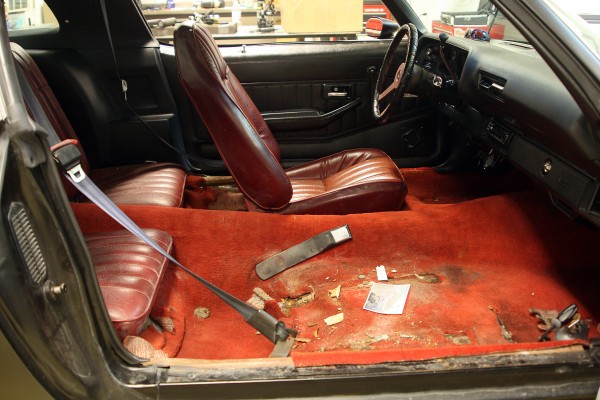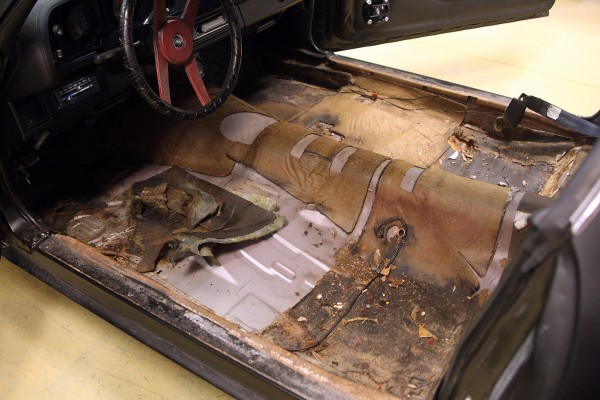Horsepower is the holy grail we all love to chase, but who says you have to be uncomfortable doing it?
While we worked to upgrade the performance of our 1978 Camaro project, we also had an eye on upgrading the dumpster fire of an interior into something that we actually wouldn’t mind spending some time in. Over the nearly 40-years of its existence, like any other car, the interior of the Camaro had degraded until the carpet was rotten and stained, and the seats were torn, with collapsed foam and—on the driver’s side at least—a bent frame. So we made a plan to completely strip the interior and upgrade it to better-than-new standards.
The foundation of the upgrade is some significant sound and vibration insulation thanks to Design Engineering’s Thermal & Acoustic Interior Kit. It includes over 40 square feet of DEI’s excellent Boom Mat damping material, over 60 square feet of Under Carpet Lite—which does an excellent job of killing noise as well as insulating the interior—and a can of Boom Mat Spray-On for getting to those hard-to-reach areas.
After installing DEI’s kit, getting the molded carpet to lay down was practically a piece of cake. At this point the interior was shaping up pretty well, and it seemed a crime to recover the old, well-worn original seats and put them back into the car. Instead, we found a Summit Racing kit that offers a pair of Procar’s Rally Series 1000 seats, sliders, and mounting brackets specific to the ‘78 Camaro.
The seats are a huge upgrade over the stock units. Procar’s Rally seats have deep bolsters, adjustable headrests, recline, and look great. Both the Rally Seats and DEI’s noise and vibration insulating products work well in a variety of cars and trucks.
We’ve documented their installation in a 1978 Camaro below, but most of these tips will work with any style vehicle.





















Comments